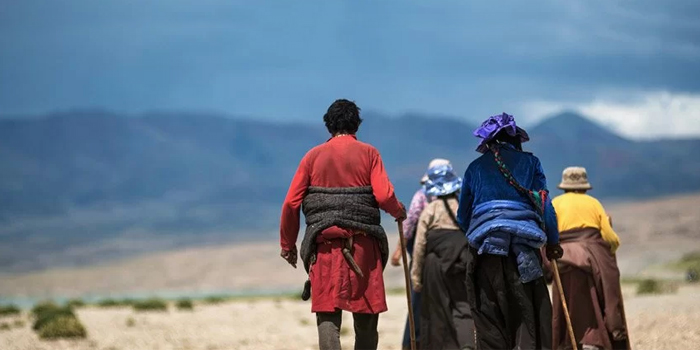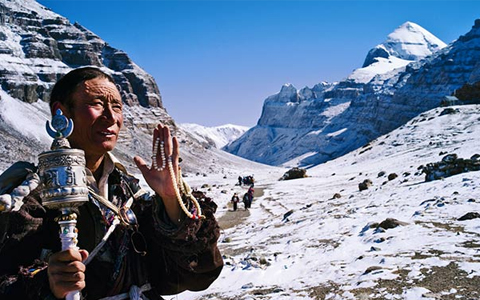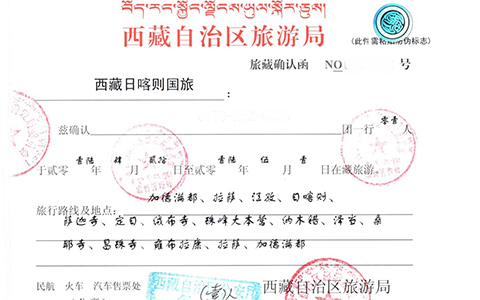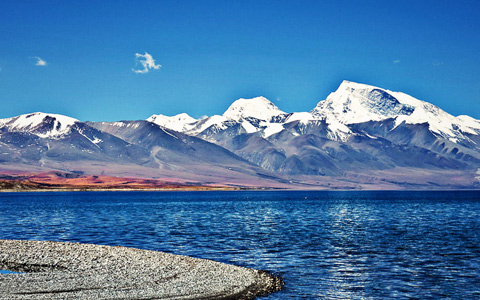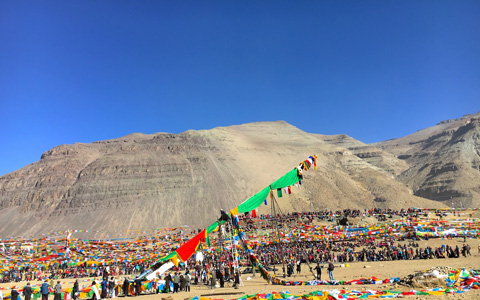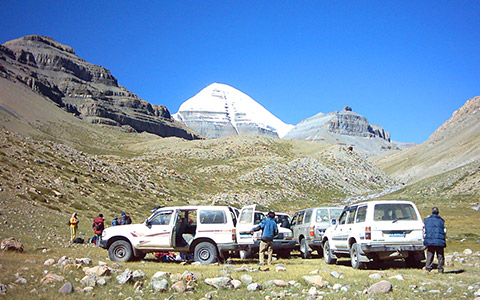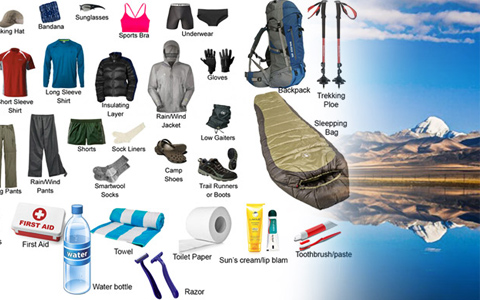Altitude of Mt. Kailash Tour or Kora and How to Avoid the High Altitude Sickness
The remote Ngari Plateau in Tibet cradles the iconic Mount Kailash, a mountain revered across multiple religions, including Hinduism, Buddhism, Jainism, and Bon. Pilgrims and adventurers from around the world embark on the Kailash Kora Tour, encircling the mountain as a once-in-a-lifetime journey on their bucket lists. However, this journey comes with a physical challenge: dealing with the high altitude of Mount Kailash.
 The Altitude of Mount Kailash Kora
The Altitude of Mount Kailash Kora
 It’s Best to Start the Kailash Kora Tour from Lhasa for Altitude Acclimatization
It’s Best to Start the Kailash Kora Tour from Lhasa for Altitude Acclimatization
 Pay Attention to Sudden Altitude Changes When Traveling to Mount Kailash from Nepal
Pay Attention to Sudden Altitude Changes When Traveling to Mount Kailash from Nepal
 How to Avoid the High Altitude Sickness during Kailash Manasarovar Yatra Tour
How to Avoid the High Altitude Sickness during Kailash Manasarovar Yatra Tour
How High is Mount Kailash?
Mount Kailash is approximately 6,638 meters (21,778 feet) above sea level, located in the Ngari Plateau in the far west of Tibet Autonomous Region of China. At an elevation exceeding 4,500 meters on average, Ngari is the highest region in Tibet, where the air is thin, oxygen levels are reduced, and extreme weather conditions prevail.
The high altitude makes Mount Kailash not only a pilgrimage of the spirit but also a demanding test of physical resilience. Altitude sickness is a big worry, so it's super important to plan well and get used to the high altitude of Mount Kailash slowly.
 Prepare well for your Mount Kailash tour to prevent altitude sickness during the high-altitude trek.
Prepare well for your Mount Kailash tour to prevent altitude sickness during the high-altitude trek.
The Altitude of Mount Kailash Kora
The Kailash Kora, also known as the Kailash Parikrama or Kailash Circumambulation, is a sacred pilgrimage route that encircles Mount Kailash. The average altitude of the Kailash Kora is approximately 5,600 meters (18,400 feet) above sea level.
The highest point in the Kailash Kora is Drolma La, which is at 5,630 meters. It usually takes three days to finish this 56-kilometer journey in a clockwise direction. Generally speaking, the route begins at Darchen (4,560m), then you enter the Lha-chu Valley, Lham-chu Valley, Dzong-chu Valley, and finally go back to Darchen. During the kora, you would spend one night in the Dirapuk monastery and another night in the Zutulpuk monastery.
 Altitude Change Chart of Mt. Kailash Kora
Altitude Change Chart of Mt. Kailash Kora
Trekking Day 1: Darchen(4,560m) - Darpoche (Great Flagpole, 4,750m) - Choku monastery(4,875m) - Dirapuk monastery (5,210m) (20km, 7-9h, 200m of climbing)
The first day of the trek starts in a clockwise direction from Darchen (4,560 meters). After a few kilometers, the trail goes up over a ridge to reach Darpoche, where Tibetans hold the SagaDawa Festival. The path then bends north to Choku monastery (4,875 meters), the first temple in the Kora. Here, you can take a short break. Continuing along the river, after about three hours, you will reach Dirapuk monastery (5,210 meters), the stop for the first night. From here, the north face of Mt. Kailash becomes visible.
 From Drirapuk Monastery, the north face of Mt. Kailash becomes visible.
From Drirapuk Monastery, the north face of Mt. Kailash becomes visible.
Trekking Day 2: Dirapuk monastery (5,210m) - Jarok Donkhang (5,210m) - Silwutsel Charnel Ground (Shiva-tsal, 5,330m) - Drolma La (5,630m) - Gaurikund Lake (Tuje Chempo Dzingbu,5,608m) - Zutulpuk Monastery(4,790m) (18km, 7-8h, 550m of climbing)
On the second day, the trek continues along Drolma Chu, reaching Jarok Donkhang (5,210 meters) and then Silwutsel Charnel Ground (Shiva-tsal, 5,330 meters). This is a rocky area where sky burials take place, a traditional Tibetan way of burial. The trail then goes over Drolma La (5,630 meters), the highest point in the journey, offering a spectacular view. After a steep descent, you reach Gaurikund Lake (Tuje Chempo Dzingbu, 5,608 meters). The path leads into Lham-chu Valley, and they finally arrive at Zutulpuk monastery (4,790 meters) for the second night.
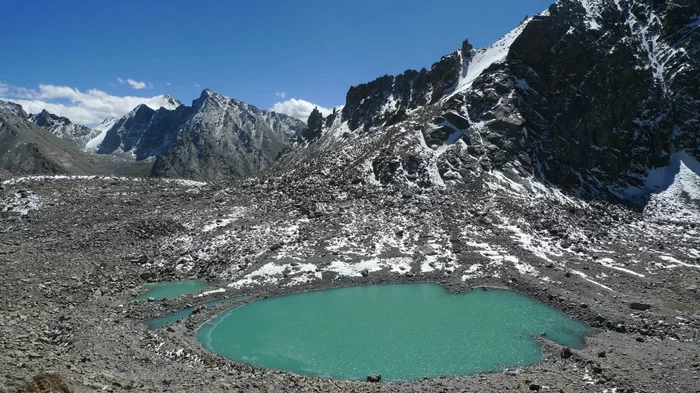 Witness the Lake of Compassion after passing Dolma La Pass
Witness the Lake of Compassion after passing Dolma La Pass
Trekking Day 3: Zutulpuk monastery(4,790m)-Darchen(4,560m) (14km, 3-4h)
The last day is a shorter walk, about 3 to 4 hours, from Zutulpuk monastery back to Darchen. The journey starts with an easy stroll down, passing through the Dzong-chu valley, which narrows into a gorge with prayer flags across the river. The road becomes rough for the last stretch back to Darchen. This marks the end of the Mt. Kailash Kora.
Extra Day to Touch Mount Kailash: Dirapuk Monastery (5,210m) - Western Slope of Mount Kailash (5,800m) - Dirapuk Monastery
If you want to touch Mount Kailash, you don’t need to climb the mountain, but you need an extra day trek up to the western slope of Mount Kailash at an altitude of about 5,800 meters.
You start your journey from Dirapuk Monastery on the second day. As you ascend the mountain, your destination is the glacier on the western slope of Mount Kailash. This expedition brings you closer to the sacred mountain, offering a unique opportunity to connect with its spiritual energy.
Please notice that the possibility of touching Mount Kailash depends on the specific terrain environment, as the glaciers change with the seasons.
It’s Best to Start the Kailash Kora Tour from Lhasa for Altitude Acclimatization
Starting the Kailash Kora tour from Lhasa is a wise decision for a more comfortable journey. You can gradually adapt to higher altitudes, easing into the demanding conditions. The itinerary is carefully designed by experienced guides, with each day presenting a subtle elevation gain, minimizing the risk of altitude-related issues.
This thoughtful progression allows you to absorb the cultural richness and natural beauty of Tibet while acclimating to increasing altitudes. Therefore, by the time you reach Mount Kailash, your body is prepared for the spiritual journey.
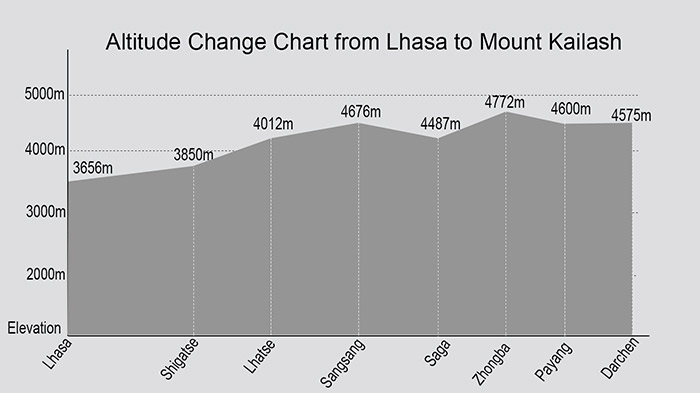 Altitude Change Chart from Lhasa to Mount Kailash
Altitude Change Chart from Lhasa to Mount Kailash
Pay Attention to Sudden Altitude Changes When Traveling to Mount Kailash from Nepal
Some pilgrims and travelers consider doing the Kailash Manasarovar Yatra from Nepal. Starting the Kailash Tour from Kathmandu in Nepal has some challenges because of big changes in how high you go. When you go to Tibet through the Gyirong region, the land gets higher really quickly from 1,400 m to 2,700 m. This sudden change in height can be risky, so it's important to plan carefully.
To handle this, it's a good idea for you to stay an extra night at Gyirong before going on to Mount Kailash. This break helps your body get used to the higher place slowly. It's not just a rest; it's a careful choice to make sure you stay well, combining practical planning with understanding what the body needs in higher altitude regions.
How to Avoid the High Altitude Sickness during Kailash Manasarovar Yatra Tour
High attention should be paid to altitude sickness during your Tibet tour, especially when taking the strenuous Kailash tour or Kora. You are supposed to have trekking experience at an elevation of above 4,000m before kora around Mount Kailash. Since there is enough time for you to get used to the high altitude on the way from Lhasa to Mt. Kailash, you should not worry too much. And there are some tips on avoiding altitude sickness when taking an adventure around this holy mountain.
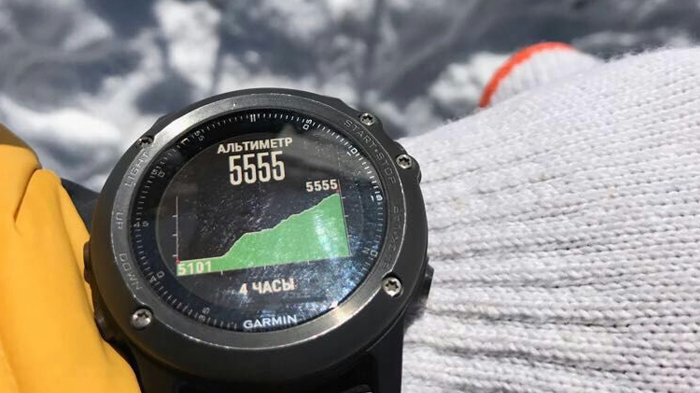 You will experience high altitude over 5,000 meters during your Mount Kailash trek.
You will experience high altitude over 5,000 meters during your Mount Kailash trek.
1. Move slowly and steadily during your kora, do not get too excited. Do not ascend too fast on the way, especially when climbing the Drolma La. Drink plenty of water before departure, since dehydration may be caused by sweating due to the dry and cold air in the high mountains.
2. Stay in Lhasa for two or three days before heading for Mt. Kailash to better adapt to the high altitude. Do not take a shower on the first two days after you enter Tibet.
3. Drinking enough water is really important to avoid altitude sickness. The air is dry, and breathing at high altitudes can make you thirsty. You should bring lots of water and drink it regularly. This easy but crucial practice keeps the body hydrated, helping it handle the challenges of the tour.
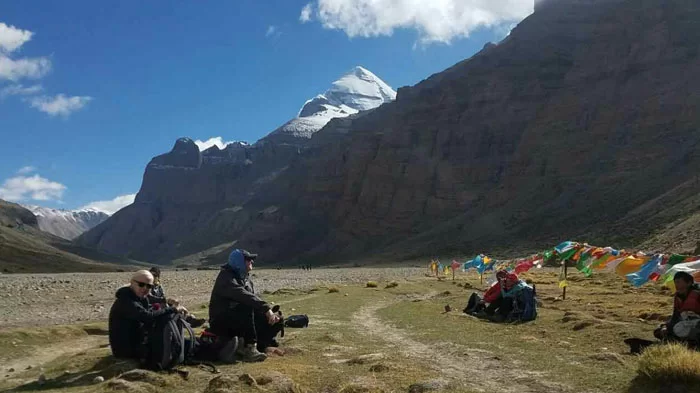 Drink plenty of water and rest in Mount Kailash trekking tour.
Drink plenty of water and rest in Mount Kailash trekking tour.
4. Bring the necessary medicines in case you suffer from mild altitude sickness or catch a cold. Recommended medicine includes Ibuprofen Sustained Release Capsules (treating low fever and headache), Oral Magnesium Gluconate Solution (replenishing one’s strength), multi-vitamins, anti-motion sickness drug, Quick Acting Heart Reliever, etc.
5. Being careful and noticing signs of feeling sick from heights is a must during the Kailash Kora. Headaches, feeling sick, dizziness, and trouble breathing are signs that need quick attention. You should immediately tell the guide and descend to lower altitudes right away if you feel any of these symptoms.
6. Ensure adequate sleep and have a good rest. Do not be nervous, since the symptoms of altitude sickness will get worse once you get stressed out.
7. Dress in Layers is a good idea because the weather in the Mount Kailash region can be tricky. This way, you can also adjust to changes in temperature, making sure you stay comfortable during the journey.
8. Do not pack too many things in your backpack. Try to travel as light as possible as you can to conserve strength. If you do feel tired during your trekking, you can also hire a horse or Tibetan yak from locals to carry your luggage.
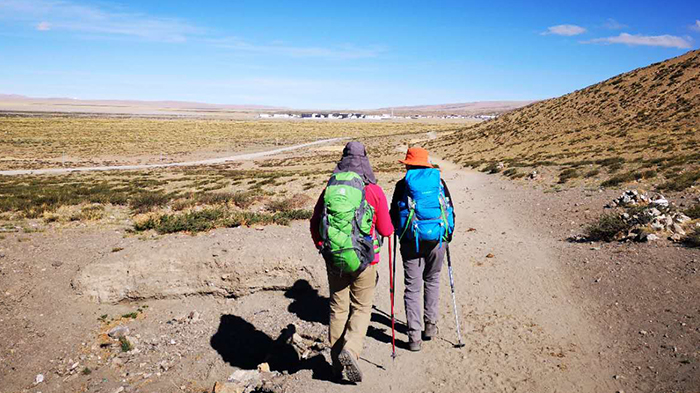 Packing wisely for your Mount Kailash trek is essential.
Packing wisely for your Mount Kailash trek is essential.
9. Prevent yourself from catching a cold. When visiting Tibet, you should attach importance to the cold, since it can be easily transformed to other serious altitude sickness, like pulmonary edema and encephaledema. If you catch a cold before entering Tibet, you’d better reschedule your trip to regain your health first.
10. It is not suggested to inhale oxygen to cope with mild hypoxia symptoms so that you can acclimatize to the high-altitude environment in less time. Normally, slight altitude sickness can be self-cured. Do not turn to the oxygen bottle frequently in case you become dependent.
Conclusion
The altitude of Mount Kailash presents both a spiritual journey and a physical challenge for pilgrims and travelers alike. Standing majestically at approximately 6,638 meters (21,778 feet) above sea level, Mount Kailash demands respect and careful preparation from those who seek to embark on its sacred paths. The Kailash Kora, with its average altitude of around 5,600 meters (18,400 feet), offers a profound experience of circumambulating this holy peak, but it also requires travelers to exercise caution, move slowly, and acclimatize properly to avoid altitude-related complications.
If you need any help arranging the trip to Mount Kailash, feel free to contact us. Our local travel experts will help you make a safe and hassle-free trip to the sacred Mount Kailash.

The Lhasa-born prodigy used to study business overseas, and got his Bachelor of Business in Nepal and India before moving back to his homeland. With pure passion for life and unlimited love for Tibet, Kunga started his guide career as early as 1997.
Responsible, considerate, and humorous, he devoted his entire life to guiding and serving international tourists traveling in Tibet. As a legendary Tibetan travel guru with 20-year pro guide experience. Currently, he is working in Tibet Vista as the Tour Operating Director. Whenever our clients run into trouble, he is your first call and will offer prompt support.
Most Popular Tibet Tour Packages
-

Lhasa - Gyantse - Shigatse - E.B.C - Saga - Kailash Trek - Darchen - Lake Manasarovar - Saga - Gyirong - Tingri - Lhasa
USD2059
View Details -

Lhasa - Gyantse - Shigatse - EBC - Saga - Darchen - Kailash Trek - Darchen - Saga - Gyirong - Tingri - Lhasa
USD2209
View Details -

17 Days Kailash Manasarovar Full Moon Tour & Guge Kingdom Exploration
Lhasa - Gyantse - Shigatse - EBC - Saga - Darchen - Zanda - Kailash Trek - Darchen - Saga - Gyirong - Tingri - Lhasa
USD2290
View Details -
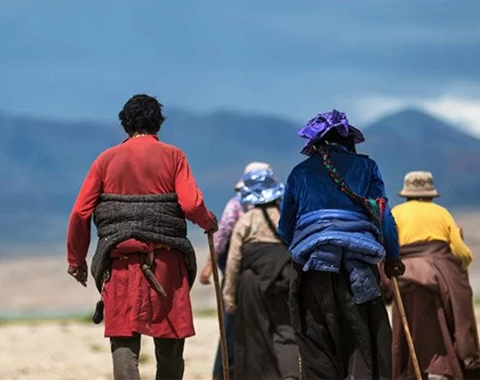
10 Days Kailash Pilgrimage Tour from Kathmandu, via Gyirong Port
Kathmandu – Gyirong – Saga – Mt.Kailash – Lake Manasarovar – Darchen – Saga – Gyirong – Kathmandu
USD1749
View Details -

13 Day Lhasa, Mt. Everest, Mt. Kailash, Lake Manasarovar and Kathmandu Adventure Tour
Lhasa - Gyantse - Shigatse - EBC - Saga - Darchen - Kailash Trek - Darchen - Saga - Gyirong - Kathmandu
USD2059
View Details -

Lhasa - Gyantse - Shigatse - Everest Base Camp - Shigatse - Lhasa
USD939
View Details -

10 Days Lhasa to Everest Base Camp and Namtso Lake Small Group Tour
Lhasa - Gyantse - Shigatse - EBC - Shigatse - Lhasa - Namtso Lake - Damxung - Lhasa
USD1289
View Details -

Lhasa - Gyantse - Shigatse - Everest Base Camp - Gyirong - Kathmandu
USD979
View Details


.jpg)




